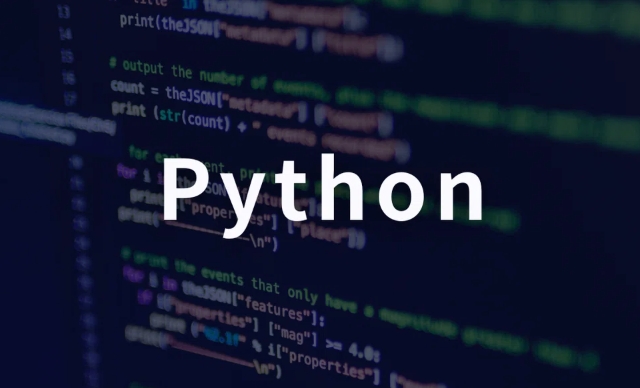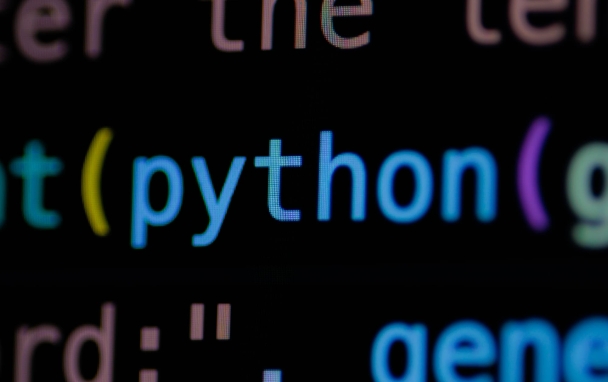AOP is a programming paradigm designed to separate cross-cutting concerns from core business logic, while Python decorators are the natural way to implement AOP. The decorator uses a wrapper function to add common functions such as logging, performance timing, permission verification, etc. without modifying its definition. 1. Logging: Use the @log decorator to automatically print function call information; 2. Performance timing: Use the @timer decorator to measure execution time and output time; 3. Permission verification: Use the @requires_auth decorator to centrally manage user authentication logic; in addition, multiple decorators are executed in a bottom-to-up order, and the order should be reasonably arranged to ensure correct behavior, such as placing the logs on the outer layer and permission controls close to the function, while maintaining the single responsibilities of each decorator to improve maintainability.

In Python, decorators are a very natural and powerful way to implement Aspect-Oriented Programming (AOP). They allow you to add additional functions, such as logging, permission checking, performance monitoring, etc. without modifying the function or class definition.

What is the relationship between AOP and decorator?
The core idea of ??tangent-oriented programming is to separate cross-cutting concerns from business logic. For example, logging and transaction processing usually occur in multiple modules, but they are not part of the core business logic.

Python's decorator just solves this problem: it allows you to "wrape" a function or method, and execute some general logic before and after the call without having to hack into the original function. This mechanism is essentially a lightweight AOP implementation.
How to use decorator to implement common AOP scenarios
1. Logging
This is one of the most common AOP applications. You can add a unified log decorator to all functions that need to record call information:

def log(func):
def wrapper(*args, **kwargs):
print(f"Calling function: {func.__name__}")
return func(*args, **kwargs)
Return wrapper
@log
def add(a, b):
return ab In this way, every call to add() will automatically print the log, and the function itself does not care about the existence of the log.
Tips: If you want the decorator to receive parameters, you can construct a three-layer structure using nested functions, or use
functools.wrapsto retain the original function meta information.
2. Performance Timing
Another typical application is measuring function execution time, which is helpful when debugging performance bottlenecks:
import time
def timer(func):
def wrapper(*args, **kwargs):
start = time.time()
result = func(*args, **kwargs)
duration = time.time() - start
print(f"{func.__name__} took {duration:.4f}s")
return result
Return wrapper
@timer
def slow_function():
time.sleep(1)This decorator can monitor performance of any function without changing any business code.
3. Access Control
Permission control is a typical cross-cutting concern in a Web framework or API interface. Decorators can encapsulate this part of the logic well:
def requires_auth(func):
def wrapper(user, *args, **kwargs):
if not user.is_authenticated:
raise PermissionError("User not authenticated")
return func(user, *args, **kwargs)
Return wrapper
@requires_auth
def access_data(user):
print(f"{user.name} is accessing data.")In this way, we can centrally manage permission judgments to avoid writing similar if judgments in each function.
The combination and order of decorators is also important
When you add multiple decorators to a function, their execution order is from bottom to top (inside to outside). For example:
@decorator1
@decorator2
def my_func():
passEquivalent to:
my_func = decorator1(decorator2(my_func))
Therefore, in actual use, pay attention to whether the order of the decorators meets expectations. This is especially important if you want multiple sections to take effect in a specific order.
Common practices include:
- Put the logs on the outermost layer to see the entire process
- Put permission control close to the function to prevent subsequent logic from being executed incorrectly
In addition, it is recommended to keep the decorator itself single and avoid one decorator doing too many things, which is more conducive to reuse and maintenance.
Basically that's it. Decorators are not a black magic, but a syntactic sugar provided by Python. Combining the characteristics of closures and higher-order functions, we can gracefully implement some of the capabilities of AOP. Using it well can make the code structure clearer and more convenient to maintain.
The above is the detailed content of Using Decorators for Aspect-Oriented Programming in Python. For more information, please follow other related articles on the PHP Chinese website!

Hot AI Tools

Undress AI Tool
Undress images for free

Undresser.AI Undress
AI-powered app for creating realistic nude photos

AI Clothes Remover
Online AI tool for removing clothes from photos.

Clothoff.io
AI clothes remover

Video Face Swap
Swap faces in any video effortlessly with our completely free AI face swap tool!

Hot Article

Hot Tools

Notepad++7.3.1
Easy-to-use and free code editor

SublimeText3 Chinese version
Chinese version, very easy to use

Zend Studio 13.0.1
Powerful PHP integrated development environment

Dreamweaver CS6
Visual web development tools

SublimeText3 Mac version
God-level code editing software (SublimeText3)
 Polymorphism in python classes
Jul 05, 2025 am 02:58 AM
Polymorphism in python classes
Jul 05, 2025 am 02:58 AM
Polymorphism is a core concept in Python object-oriented programming, referring to "one interface, multiple implementations", allowing for unified processing of different types of objects. 1. Polymorphism is implemented through method rewriting. Subclasses can redefine parent class methods. For example, the spoke() method of Animal class has different implementations in Dog and Cat subclasses. 2. The practical uses of polymorphism include simplifying the code structure and enhancing scalability, such as calling the draw() method uniformly in the graphical drawing program, or handling the common behavior of different characters in game development. 3. Python implementation polymorphism needs to satisfy: the parent class defines a method, and the child class overrides the method, but does not require inheritance of the same parent class. As long as the object implements the same method, this is called the "duck type". 4. Things to note include the maintenance
 Explain Python generators and iterators.
Jul 05, 2025 am 02:55 AM
Explain Python generators and iterators.
Jul 05, 2025 am 02:55 AM
Iterators are objects that implement __iter__() and __next__() methods. The generator is a simplified version of iterators, which automatically implement these methods through the yield keyword. 1. The iterator returns an element every time he calls next() and throws a StopIteration exception when there are no more elements. 2. The generator uses function definition to generate data on demand, saving memory and supporting infinite sequences. 3. Use iterators when processing existing sets, use a generator when dynamically generating big data or lazy evaluation, such as loading line by line when reading large files. Note: Iterable objects such as lists are not iterators. They need to be recreated after the iterator reaches its end, and the generator can only traverse it once.
 How to handle API authentication in Python
Jul 13, 2025 am 02:22 AM
How to handle API authentication in Python
Jul 13, 2025 am 02:22 AM
The key to dealing with API authentication is to understand and use the authentication method correctly. 1. APIKey is the simplest authentication method, usually placed in the request header or URL parameters; 2. BasicAuth uses username and password for Base64 encoding transmission, which is suitable for internal systems; 3. OAuth2 needs to obtain the token first through client_id and client_secret, and then bring the BearerToken in the request header; 4. In order to deal with the token expiration, the token management class can be encapsulated and automatically refreshed the token; in short, selecting the appropriate method according to the document and safely storing the key information is the key.
 How to iterate over two lists at once Python
Jul 09, 2025 am 01:13 AM
How to iterate over two lists at once Python
Jul 09, 2025 am 01:13 AM
A common method to traverse two lists simultaneously in Python is to use the zip() function, which will pair multiple lists in order and be the shortest; if the list length is inconsistent, you can use itertools.zip_longest() to be the longest and fill in the missing values; combined with enumerate(), you can get the index at the same time. 1.zip() is concise and practical, suitable for paired data iteration; 2.zip_longest() can fill in the default value when dealing with inconsistent lengths; 3.enumerate(zip()) can obtain indexes during traversal, meeting the needs of a variety of complex scenarios.
 What are python iterators?
Jul 08, 2025 am 02:56 AM
What are python iterators?
Jul 08, 2025 am 02:56 AM
InPython,iteratorsareobjectsthatallowloopingthroughcollectionsbyimplementing__iter__()and__next__().1)Iteratorsworkviatheiteratorprotocol,using__iter__()toreturntheiteratorand__next__()toretrievethenextitemuntilStopIterationisraised.2)Aniterable(like
 Explain Python assertions.
Jul 07, 2025 am 12:14 AM
Explain Python assertions.
Jul 07, 2025 am 12:14 AM
Assert is an assertion tool used in Python for debugging, and throws an AssertionError when the condition is not met. Its syntax is assert condition plus optional error information, which is suitable for internal logic verification such as parameter checking, status confirmation, etc., but cannot be used for security or user input checking, and should be used in conjunction with clear prompt information. It is only available for auxiliary debugging in the development stage rather than substituting exception handling.
 What are Python type hints?
Jul 07, 2025 am 02:55 AM
What are Python type hints?
Jul 07, 2025 am 02:55 AM
TypehintsinPythonsolvetheproblemofambiguityandpotentialbugsindynamicallytypedcodebyallowingdeveloperstospecifyexpectedtypes.Theyenhancereadability,enableearlybugdetection,andimprovetoolingsupport.Typehintsareaddedusingacolon(:)forvariablesandparamete
 Python FastAPI tutorial
Jul 12, 2025 am 02:42 AM
Python FastAPI tutorial
Jul 12, 2025 am 02:42 AM
To create modern and efficient APIs using Python, FastAPI is recommended; it is based on standard Python type prompts and can automatically generate documents, with excellent performance. After installing FastAPI and ASGI server uvicorn, you can write interface code. By defining routes, writing processing functions, and returning data, APIs can be quickly built. FastAPI supports a variety of HTTP methods and provides automatically generated SwaggerUI and ReDoc documentation systems. URL parameters can be captured through path definition, while query parameters can be implemented by setting default values ??for function parameters. The rational use of Pydantic models can help improve development efficiency and accuracy.






